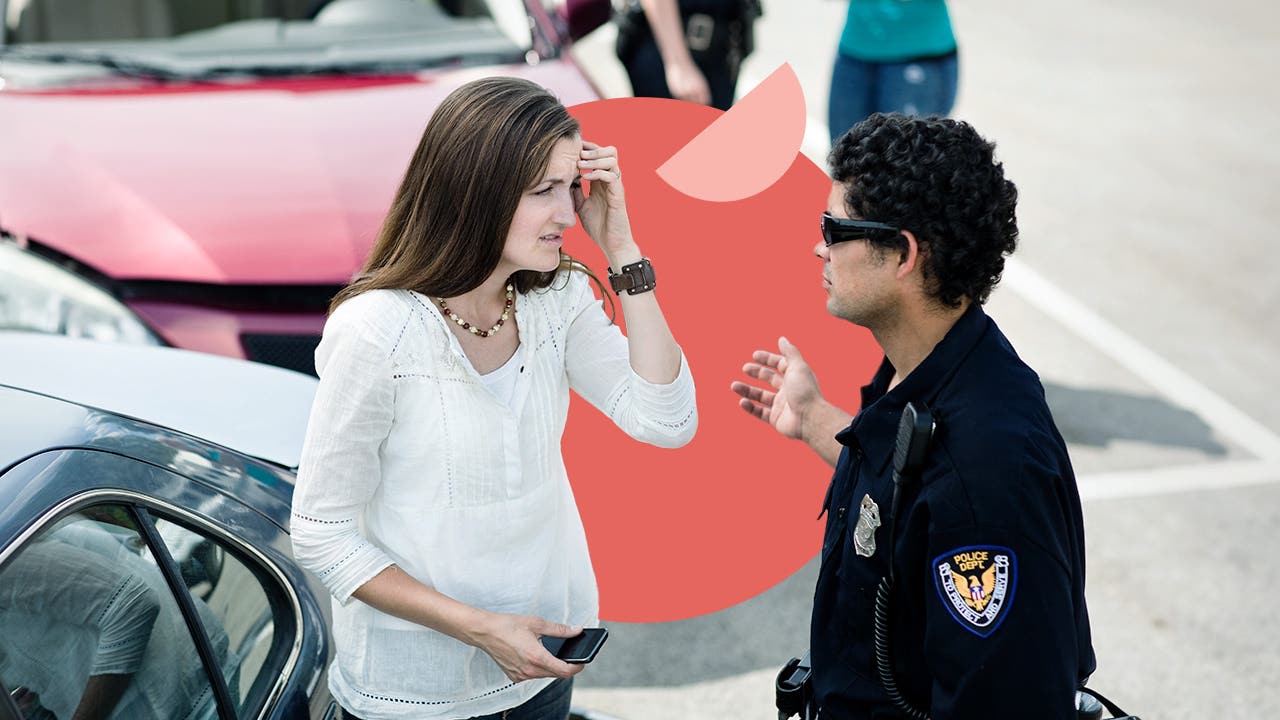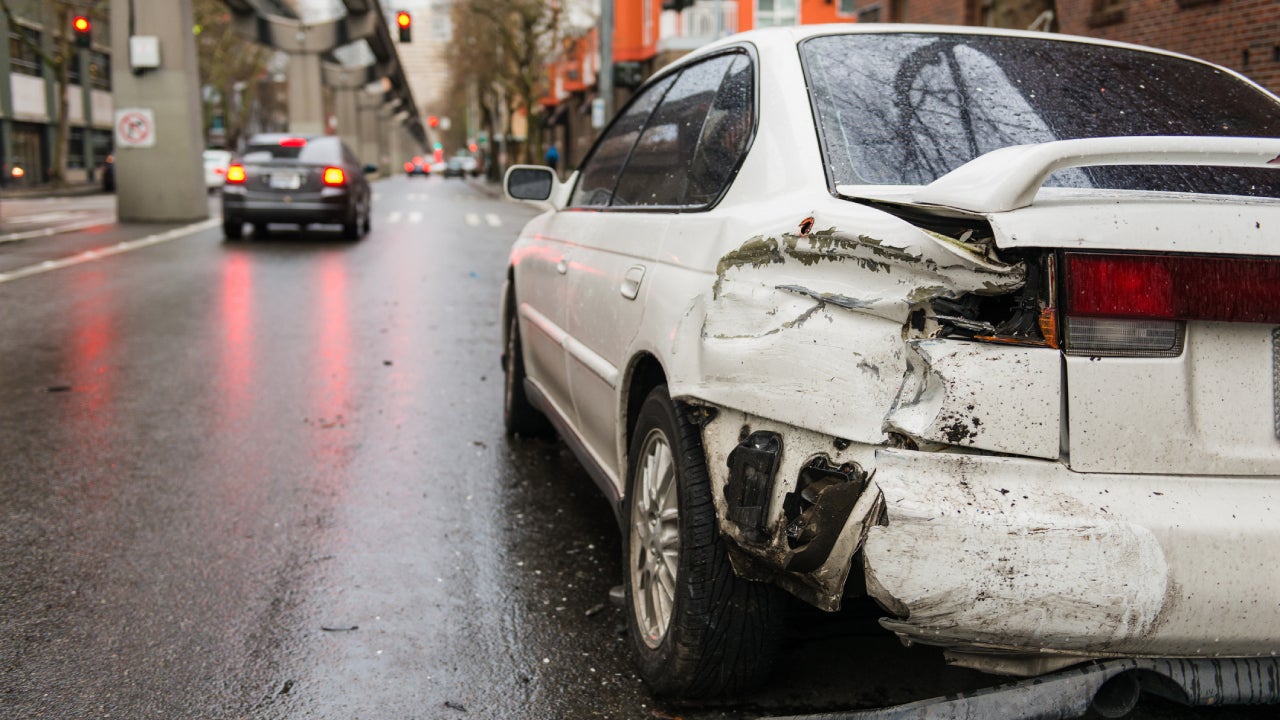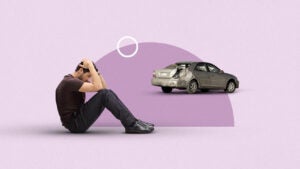What to do if you are injured in a car accident

Having an accident can be a frightening and stressful experience, no matter how minor it might seem. An accident with injuries can be even more stressful, and it can be difficult to know what to do in the heat of the moment. If you or a passenger in your car is injured in a car accident, there are steps you can take to ensure that the appropriate authorities are notified and help arrives as quickly as possible. Bankrate takes a look at what to do if you were injured in a car accident as a passenger or driver.
What to do if you are injured in a car accident
Knowing what to do if you are injured in a wreck isn’t always evident. After checking on everyone’s well-being, move your vehicle from the roadway and follow the steps below.
Before getting any insurance carriers involved, you should prioritize the following:
- Report the accident to law enforcement: Most states require you to contact law enforcement in the event of an accident, especially one with injuries. Even if the injuries appear minor, you should still get the police involved in case the other drivers are uncooperative or further injuries develop later. Plus, if the police arrive on the scene, they may file a motor vehicle report on your behalf; otherwise, you might be required to submit a self-reporting crash form online or by mail.
- Document accident details: This is the time to make a record of pertinent information, such as license plate numbers, insurance information for all involved drivers and photos of the vehicle damage and surrounding areas. If there are any witnesses who are not drivers, be sure to get their details or contact information as well. You can write down the information or take photos or videos with your smartphone to avoid overlooking anything.
- Record details following the accident: Taking quick notes, even if it is a voice recording on your phone, may provide helpful details for use later on. Consider taking notes on who was injured, the symptoms expressed and which medical providers were involved. It also helps to keep track of any documentation you receive and receipts for out-of-pocket expenses you had to pay as a result of the accident.
- Seek immediate medical attention: Injuries may seem very minor at the time, but it is also possible for injuries not to appear until several days later. For this reason, getting medical advice immediately following the accident is one of the best ways to help ensure your safety as well as a smooth claim process.
Injuries possible from an accident
It’s important to take being hurt in a car accident seriously. Calling for medical attention may seem unnecessary when injuries are not apparent, but this is a critical step. Medical personnel are trained to assess injuries, including those that may develop after the accident occurs. While injuries may occur in many forms and severity, there are a few common injuries, including:
- Whiplash
- Headaches
- Back pain
- Neck pain
- Cuts and scrapes
These are only a handful of possible injuries. More serious issues, such as broken bones, internal bruising or head injuries, can also occur. Medical attention is recommended in case injuries are life-threatening or more complex than is apparent. Depending on the seriousness of an injury, you may qualify for additional pain and suffering recompense if you have no-fault insurance.
What to do if you are injured as a passenger in a car accident
If you are a passenger in a car that is involved in an accident and are injured, your first thought, most likely, will be about getting medical help for your injuries. Even if the injuries are minor, it can be important to be seen by a medical professional to rule out any lasting damage. You may also receive compensation for medical expenses or property damage through several avenues: the at-fault driver’s insurance, your driver’s insurance or your own.
Filing a claim with at-fault driver’s insurance
Your first course of action with insurance might be to file a claim with the at-fault driver’s insurance carrier. Since almost every state legally requires drivers to carry a minimum amount of insurance, this is a viable option for passengers in a car accident.
The minimum amount of coverage required often includes bodily injury liability (BI) and property damage liability (PD). Bodily injury liability is designed to specifically pay for medical expenses related to injuries from an accident. If the at-fault driver is driving legally, their policy should include a minimum amount of coverage for this scenario. The same applies to property (or vehicle) damage.
The exact limits of the at-fault driver’s policy may get a little more complicated. Depending on the state, the minimum BI may be $25,000 per person or up to $100,000, for example. The at-fault driver may not have purchased additional liability coverage beyond the legal requirement. If your injuries and medical expenses are extensive, then the at-fault driver’s limits may not be enough to cover the costs.
Filing a claim with your driver’s insurance
As a passenger, you may be able to file a claim with your driver’s insurance if they have a policy that includes personal injury protection (PIP) or medical payments. While some states require this type of coverage, not all states do. If your driver does have these optional coverages, then a passenger is usually covered.
If the driver of the car you were injured in does not have PIP or medical payments coverage, then it is usually possible for you to file a claim through their liability insurance. This could cause their insurance premiums to increase, but it could help pay towards your medical expenses that were not covered by the at-fault driver’s policy.
You may choose to file a claim for only the difference in what the at-fault driver’s policy did not cover. For example, if the at-fault driver has $50,000 in liability, but your medical expenses are $60,000, then you could seek payment for the $10,000 difference with your driver’s policy.
Filing a claim with your insurance
Filing a claim with your personal auto insurance policy is another option. If you have PIP or medical payments coverage with your policy, and it is not available through the driver’s policy, then this could pay towards expenses.
You may also find help with medical expenses through your health insurance. Typically the auto insurance policy applies first and then you could work with your health insurance company for coverage with medical treatment.
When to use uninsured motorist coverage
There are also times when uninsured motorist coverage may apply, including if you are the passenger. According to the Insurance Information Institute, about 14 percent of all drivers are uninsured. This means if you are involved in an accident with someone who does not have insurance coverage and the accident is ruled the other driver’s fault, then the uninsured motorist coverage would apply. This could help cover expenses related to injuries such as medical and physical therapy expenses or lost wages due to the accident.
Frequently asked questions
Why we ask for feedback Your feedback helps us improve our content and services. It takes less than a minute to complete.
Your responses are anonymous and will only be used for improving our website.
You may also like

Car insurance after a hit-and-run in Nevada

How is fault determined in a car accident?

What to do after a hit-and-run in Pennsylvania

Managing trauma after a car accident


